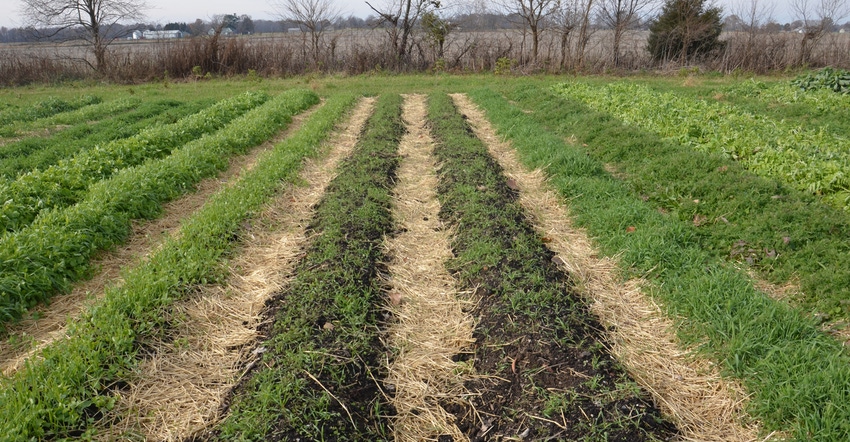April 3, 2019

By Amanda Kautz
The phrases “conservation farming,” “sustainable farming” and “regenerative farming” are common. They are often followed by references to conservation practices that these types of farms use, such as cover crops and no-till. Many times, these concepts are in connection to large farming operations covering lots of land.
The same principles can be applied on a smaller scale. “Conservation gardening” is gaining popularity as growers realize that with square feet instead of acres, it’s even more important to keep the soil functioning and productive. Cover crops, no-till, mulching, nutrient management, pest management and buffers may look different on a small scale, but they serve the same purpose no matter the farm size — to improve soil health and function. Healthier soil will improve your overall productivity.
Whether you grow for a farmers market, roadside produce stand or your own consumption, here are ideas to incorporate conservation into vegetable production.
Seek information
Your crop rotation should be intense and diverse, including early-, mid- and late-season crops. This rotation allows the opportunity to plant cover crops in the summer and the fall.
There can be negative interactions between plants. Do your research to make sure your cover crop will not have an adverse effect on your next planned crop. There are many resources, including The Midwest Cover Crops Field Guide published by the Midwest Cover Crops Council and Purdue University Crop Diagnostic Training and Research Center, and Managing Cover Crops Profitably by the Sustainable Agriculture Network, which will list considerations for cover crops in a vegetable-crop rotation.
An example to consider when adding cover crops earlier is planting buckwheat between early- and late-season vegetable crops. Adding a cover during this time will help suppress weeds, prevent soil erosion and add diversity to your crop rotation. It’s also a great source of nectar and an attractant for pollinators. Buckwheat also scavenges phosphorus for use by the next crop. Once it’s terminated, buckwheat residue will decompose in about two weeks, releasing nutrients to the newly planted, following crop.
Reduce tillage
Once you feel comfortable using cover crops, combining them with reduced tillage or no-till is a great soil-building combination. An oat-daikon radish mixture is a good early-fall cover crop to help your transition to reduced tillage. It can be planted until about five weeks before the first frost, so it can easily follow peas, potatoes and broccoli.
This mixture will winterkill after a few hard frosts, so there’s no need to control it in the spring. At planting, residue can be strip-furrowed for seeded crops, or seedlings can be directly transplanted into it. Additional mulch may be needed to keep weeds suppressed after planting in a reduced-till or no-till situation. The rule of thumb is that a layer of residue about 4 inches deep is needed for good weed control.
These two examples are just the beginning. There are many ways to customize cover crops and other conservation practices to fit your existing vegetable production system.
If you’ve been considering trying a new soil-building system but are nervous about making the transition, try it on a small area first. This will help you gain the comfort level and knowledge you need to make the leap and transition to a larger area.
Kautz is a district conservationist with the Natural Resources Conservation Service. She writes on behalf of the Indiana Conservation Partnership.
You May Also Like




